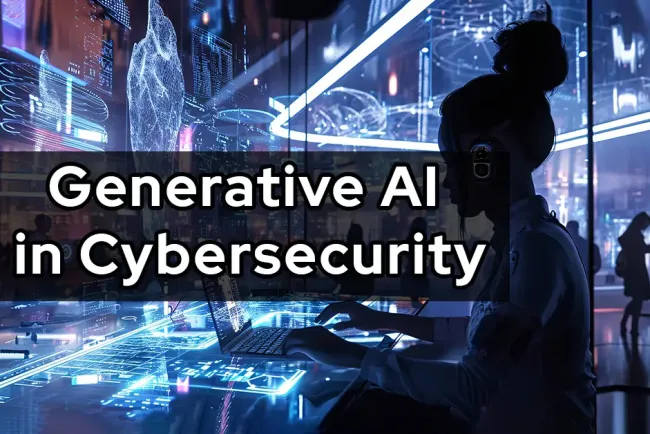How AI is Revolutionizing Social Engineering Attacks | Risks, Techniques, and Prevention
rtificial Intelligence (AI) is revolutionizing the way cybercriminals conduct social engineering attacks. AI-powered phishing emails, deepfake scams, and automated chatbots make cyber deception more effective than ever. Attackers use AI to craft highly convincing phishing attempts, clone voices, generate fake videos, and extract sensitive data from unsuspecting victims. AI-driven reconnaissance further allows hackers to gather intelligence and create personalized attacks that are difficult to detect. While AI enhances cybersecurity defenses, it also empowers cybercriminals with advanced hacking tools. The rise of AI-driven phishing, voice cloning fraud, and deepfake impersonation poses significant threats to businesses and individuals. This blog explores how AI is making social engineering attacks more dangerous, the techniques used, and the best strategies for protection. To stay ahead of these evolving threats, organizations must implement AI-driven cybersecurity solutions, deepfa

Table of Contents
- Introduction
- How AI Enhances Social Engineering Attacks
- Why AI-Powered Social Engineering Attacks Are More Dangerous
- How to Defend Against AI-Powered Social Engineering
- Conclusion
- FAQ
Introduction
Social engineering attacks have long been one of the most effective tactics used by cybercriminals. These attacks rely on manipulating human psychology rather than exploiting technical vulnerabilities. However, with the rise of Artificial Intelligence (AI), social engineering has become even more dangerous. AI-powered tools can now generate highly personalized phishing emails, deepfake audio and video, and automated hacking attempts that deceive even the most cautious users.
This blog explores how AI is revolutionizing social engineering attacks, the risks it poses, and how individuals and organizations can defend against these advanced cyber threats.
How AI Enhances Social Engineering Attacks
AI has significantly improved the effectiveness, speed, and scalability of social engineering attacks. Cybercriminals no longer rely solely on manual efforts; instead, they use AI to automate and refine their deception techniques. Here’s how AI is making social engineering more dangerous:
AI-Generated Phishing Emails
Traditional phishing attacks often include spelling errors, generic greetings, and poorly written messages. AI-powered phishing tools, such as FraudGPT and WormGPT, generate perfectly crafted emails that sound more convincing and personalized to the target.
Deepfake Audio & Video Scams
Cybercriminals use AI-driven deepfake technology to create realistic fake videos and voice recordings that impersonate executives, government officials, or even friends and family members. This allows attackers to conduct CEO fraud, financial scams, and identity theft with alarming accuracy.
Automated Chatbots for Social Engineering
AI chatbots, powered by Natural Language Processing (NLP), can engage with victims in real-time conversations to extract sensitive information. These bots can mimic customer support agents, HR representatives, or financial advisors to manipulate users into revealing credentials.
AI-Driven Reconnaissance for Targeted Attacks
Before launching a social engineering attack, cybercriminals gather intelligence using AI-powered Open-Source Intelligence (OSINT) tools. These tools analyze social media, public records, and leaked data to create highly customized attacks tailored to each target.
Spear Phishing & Business Email Compromise (BEC)
AI enables hyper-personalized spear phishing attacks by scanning publicly available data to craft messages that look authentic. Attackers can mimic internal communications within a company, tricking employees into transferring funds or sharing sensitive information.
AI-Powered Voice Cloning for Fraud
Cybercriminals use AI-based voice cloning software to impersonate family members or business executives over the phone. Victims believe they are speaking with someone they trust and unknowingly send money or disclose confidential details.
Why AI-Powered Social Engineering Attacks Are More Dangerous
The integration of AI into cybercrime has created more sophisticated and effective social engineering attacks. Here’s why these AI-driven threats are more dangerous:
- Higher Success Rates – AI eliminates human errors and creates more convincing attacks.
- Scalability – Attackers can target thousands of victims simultaneously using AI automation.
- Faster Execution – AI can quickly generate real-time responses that deceive users.
- Adaptive Learning – AI models analyze past attacks and improve their strategies, making them harder to detect.
- Lower Costs for Hackers – AI tools reduce the effort required for cybercriminals to launch sophisticated attacks.
How to Defend Against AI-Powered Social Engineering
Organizations and individuals must adopt proactive security measures to combat AI-driven social engineering threats. Here are some key strategies:
Employee Training & Awareness
- Conduct regular security awareness training to help employees recognize phishing emails, deepfakes, and AI-driven scams.
- Educate staff about AI-generated fraud tactics and how to verify suspicious requests.
Multi-Factor Authentication (MFA)
- Enforce MFA for all sensitive accounts to prevent unauthorized access.
- Use biometric authentication or hardware security keys for enhanced protection.
AI-Powered Cybersecurity Solutions
- Deploy AI-driven fraud detection systems to identify anomalous behavior.
- Use behavioral analysis tools to detect suspicious activities before an attack occurs.
Deepfake Detection Technology
- Invest in deepfake detection software to verify audio and video content before acting on it.
- Use watermarking and blockchain-based authentication to prevent deepfake misuse.
Strict Verification Protocols
- Always verify financial transactions and sensitive requests through multiple communication channels.
- Avoid sharing confidential information via email, phone, or chat without verification.
Limiting Public Information Exposure
- Reduce personal and company data shared on social media to minimize OSINT-based attacks.
- Implement privacy settings to protect sensitive information from cybercriminals.
Conclusion
AI has undeniably made social engineering attacks more dangerous, scalable, and effective. Phishing, deepfake fraud, voice cloning, and AI-driven reconnaissance are becoming powerful tools in the hands of cybercriminals. However, by implementing strong security measures, advanced AI-driven defense systems, and continuous employee training, organizations and individuals can mitigate these evolving threats.
While AI poses risks, it also provides solutions. Cybersecurity professionals must stay ahead by using AI for threat detection, behavior analysis, and deepfake identification. The key to fighting AI-driven cyber threats is leveraging AI for defense while maintaining strong human oversight.
In the age of AI-powered cybercrime, awareness and vigilance are the strongest defenses against social engineering attacks.
FAQ
How does AI make social engineering attacks more effective?
AI automates phishing attempts, generates realistic deepfakes, and analyzes user behavior to craft highly targeted attacks, making social engineering more convincing.
What is AI-powered phishing?
AI phishing involves using machine learning models to create personalized phishing emails that mimic legitimate communications, making them harder to detect.
Can AI create realistic fake videos and voices?
Yes, AI-driven deepfake technology allows cybercriminals to generate fake videos and voice recordings that convincingly impersonate real people.
What is an AI-powered chatbot scam?
Cybercriminals use AI chatbots to engage in real-time conversations with victims, extracting sensitive information like passwords, bank details, or personal data.
How does AI help in reconnaissance for cyberattacks?
AI scans social media, public records, and leaked data to collect intelligence about potential targets, allowing for highly personalized social engineering attacks.
What is AI-enhanced spear phishing?
AI improves spear phishing by analyzing a victim's digital footprint and crafting highly personalized fake emails, making them look more legitimate.
How do hackers use AI for Business Email Compromise (BEC)?
AI generates emails that mimic executives, managers, or employees, convincing victims to transfer money or disclose confidential company information.
Can AI automate social engineering attacks?
Yes, AI-powered tools can automate scam messages, fake calls, and phishing attempts, allowing hackers to scale attacks across multiple victims.
What are AI-generated scam calls?
AI voice cloning tools can create fake calls impersonating company executives, law enforcement, or family members to manipulate victims into sending money.
How does AI bypass traditional cybersecurity defenses?
AI can create attacks that evade email filters, security software, and fraud detection systems by continuously adapting to new defense mechanisms.
What is deepfake fraud, and how does it work?
Deepfake fraud involves using AI-generated videos or voice recordings to impersonate people, tricking victims into transferring funds or sharing sensitive information.
Can AI-generated deepfakes be detected?
Yes, deepfake detection tools use AI to analyze inconsistencies in video, audio, and facial movements to identify manipulated content.
How do cybercriminals use AI for password cracking?
AI-powered hacking tools can predict and crack passwords faster by analyzing common password patterns and using brute-force attacks.
Can AI help in identity theft?
Yes, AI collects stolen personal data from data breaches and social media to create fake identities or steal existing ones.
What role does AI play in automated scams?
AI automates fraudulent conversations, fake surveys, and customer support scams to manipulate victims into revealing personal details.
Are AI-powered cyberattacks more dangerous than traditional methods?
Yes, AI attacks are faster, more scalable, and more convincing, making them harder to detect and stop compared to traditional scams.
What is AI-driven impersonation fraud?
AI can mimic someone's writing style, voice, or appearance, tricking victims into believing they are interacting with a real person.
How does AI help cybercriminals evade detection?
AI modifies attack patterns to bypass traditional security measures, email spam filters, and fraud detection systems.
How can businesses defend against AI-powered phishing attacks?
Organizations should implement AI-driven fraud detection, email filtering, security awareness training, and multi-factor authentication (MFA).
What is AI-enhanced social engineering?
AI-enhanced social engineering combines machine learning, chatbots, deepfakes, and phishing automation to make attacks more deceptive and scalable.
Can AI impersonate executives in financial fraud?
Yes, AI-generated voice cloning and emails can imitate executives, convincing employees to approve fake financial transactions.
How do cybercriminals use AI for targeted advertising scams?
Hackers use AI to analyze user behavior and browsing history to create fake ads that trick people into downloading malware.
Are AI-generated phishing emails more dangerous than traditional ones?
Yes, AI phishing emails are more sophisticated, personalized, and convincing, making them far more likely to succeed.
What is AI-assisted OSINT in cybercrime?
AI-powered Open-Source Intelligence (OSINT) tools scan public data sources to gather personal and company information for attacks.
How can AI detect and prevent deepfake scams?
AI-driven fraud detection tools use pattern recognition, biometric analysis, and blockchain verification to identify deepfake content.
Can AI be used to protect against social engineering attacks?
Yes, AI-powered cybersecurity tools detect suspicious activity, analyze behavior, and flag potential phishing scams in real-time.
What are some AI-powered cybersecurity tools for phishing detection?
Tools like Microsoft Defender, Darktrace, and Google’s AI-powered fraud detection help prevent AI-driven phishing scams.
What industries are most at risk from AI-powered social engineering attacks?
Financial institutions, government agencies, healthcare providers, and large corporations are primary targets of AI-enhanced cyber fraud.
How can individuals protect themselves from AI-generated scams?
Be cautious of unexpected messages, verify requests through multiple channels, enable MFA, and avoid oversharing personal data online.
What is the future of AI in cybercrime?
AI will continue evolving, making cyberattacks more sophisticated. However, AI-powered security measures will also advance to counter emerging threats.












![Top 10 Ethical Hackers in the World [2025]](https://www.webasha.com/blog/uploads/images/202408/image_100x75_66c2f983c207b.webp)

![[2025] Top 100+ VAPT Interview Questions and Answers](https://www.webasha.com/blog/uploads/images/image_100x75_6512b1e4b64f7.jpg)









